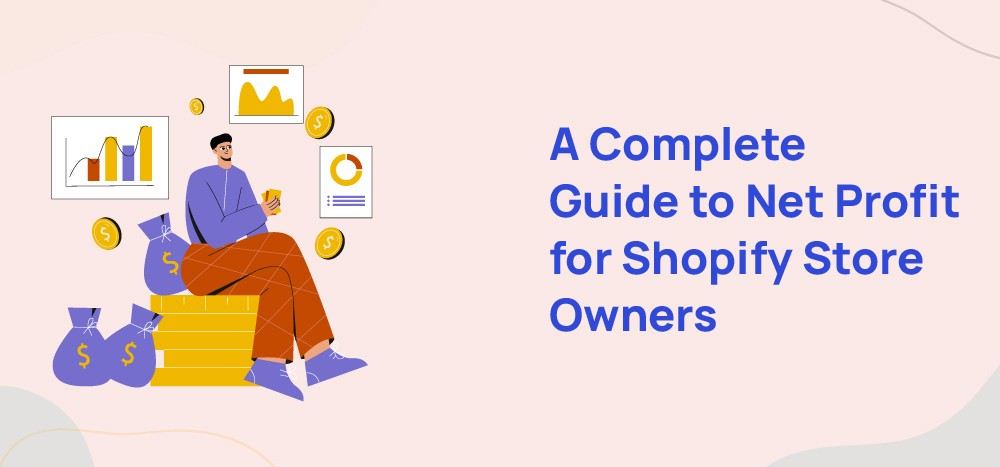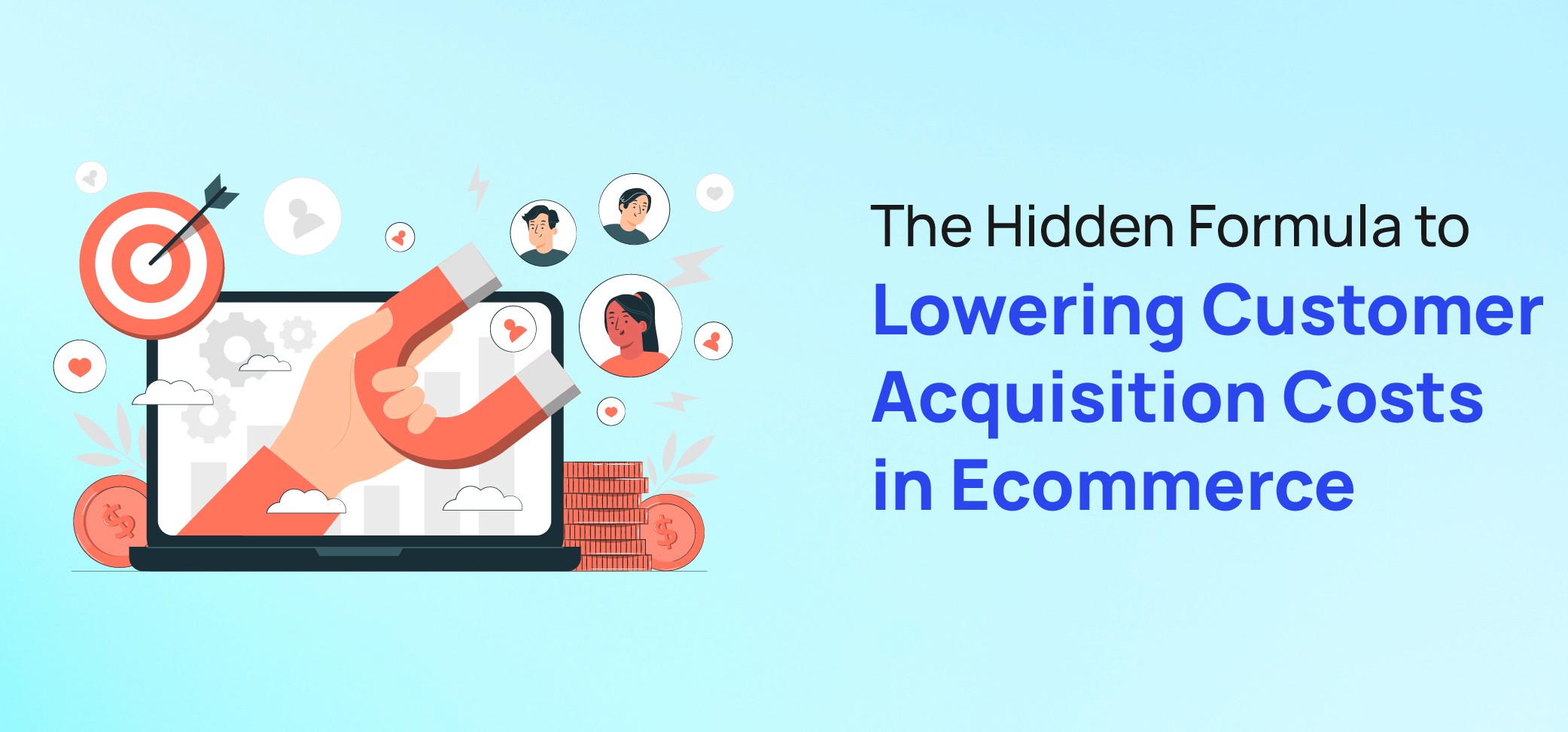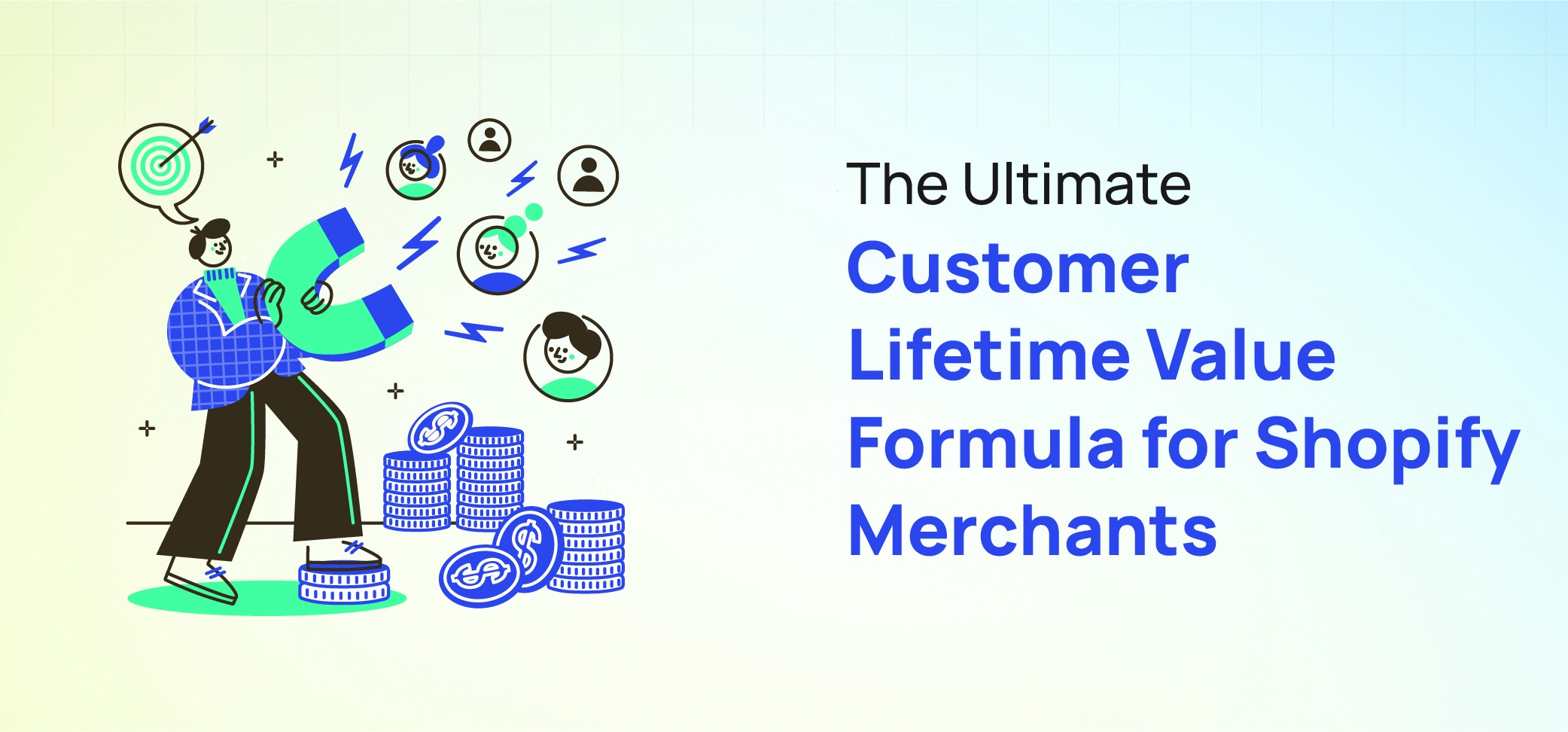
Lifetime Value Calculation for Shopify Stores
Here’s how to calculate Lifetime Value for your Shopify store, especially if you're running a subscription model for your business.
Oct 22, 2024
The business world is always changing with new trends and ideas, but one important measure has remained constant: Lifetime Value (LTV). Knowing the lifetime value of customers is essential for any e-commerce business that wants to succeed.
What is Customer Lifetime Value (CLV)?

CLV is the total value a customer brings to a business over the time they stay with it. Since it's cheaper to keep current customers than to find new ones, focusing on improving CLV through good customer retention strategies is very beneficial.
In simple terms, lifetime value is how much money a customer contributes throughout their relationship with your business. It helps identify ideal customers, predict future profits for your store, and understand customer behavior. By looking at factors like average order size and profit margin, you can better grasp the significance of LTV.
Why is CLV important for Shopify businesses?
Lifetime Value, also called Customer Lifetime Value, is often abbreviated as CLV, LTV, or CLTV. Among the many metrics used to evaluate online store performance and profitability, Customer Lifetime Value is one of the most crucial. Additionally, using predictive LTV can guide you in making smart choices about how much to spend on acquiring customers and shaping your overall business strategy.
Why CLV Should Be Your Store’s Main Metric
In the busy world of ecommerce, many store owners forget that CLV (Customer Lifetime Value) can be a key number for important decisions. By focusing on CLV, you can better understand the balance between gaining new customers and keeping existing ones.
Successful ecommerce owners use CLV to review their marketing efforts and find ways to improve products and customer service. This helps them see the long-term value of customers and measure how effective their marketing is.
Instead of just focusing on getting new customers, CLV shows you how many of those customers stick around and keep buying after their first purchase. By looking at different customer groups, you can spot which ones are more likely to stay loyal.
In simple terms, using CLV as your main metric lets you identify your best customers and focus on keeping them happy. This is especially important when thinking about the LTV CAC ratio (Lifetime Value to Customer Acquisition Cost). Otherwise, you might waste your resources on less profitable one-time buyers.
By calculating CLV for all your customers, you can rank them based on how much they contribute to your profits. This information helps you create strategies that maximize earnings over time. Plus, CLV can help forecast future profits by showing which customers are worth investing in for the long haul.
To sum it up:
Calculating CLV helps ecommerce stores know how much they can spend on gaining and keeping customers for a good return.
A well-calculated CLV gives merchants a customer-focused approach, allowing them to use their limited resources wisely for the best results.
CLV can predict future profits from customers, highlighting how much money is needed to keep them around.
Using these insights in your business strategy will help you make smart choices that promote growth and stability. Consider tools like RetentionX to simplify your CLV calculations and boost your overall performance.
How is Customer Lifetime Value Different From Traditional Customer Retention Metrics?
Interestingly, even though it has many advantages, calculating customer lifetime value (CLV) has only recently become common in e-commerce.
In the past, businesses relied on outdated methods to evaluate customer loyalty and retention. While these traditional metrics have their benefits, they are quite different from CLV.
You might still be using one of these older methods. So, let’s compare some of these classic retention techniques to see how they differ from CLV calculations:
RFM Approach
Past Customer Value (PCV)
Share of Wallet (SOW)
Understanding these retention techniques is important for analyzing customer loyalty and recognizing the unique insights that CLV can offer.
RFM Approach Explained

The RFM approach is one of the best ways to assess customer loyalty and retention. It stands for Recency (R), Frequency (F), and Monetary Value (M) and is a key method for segmenting customers.
Understanding RFM Components
Recency: How recently a customer made a purchase from your store.
Frequency: How often a customer makes purchases from your store over a specific time.
Monetary Value: The average amount a customer spends on their purchases.
By looking at these three factors—Recency, Frequency, and Monetary Value—you can learn important things about your customers.
How RFM Works
In this approach, a store ranks its customers based on these three factors:
Recency
Frequency
Monetary Value
Each factor gets a score; customers with high scores rank higher and are seen as more valuable and likely to respond to future offers. Those with low scores rank lower and are seen as less likely to respond.
Benefits of Using RFM
By using the RFM method to segment your customers, you can get better returns on your marketing efforts by focusing on valuable and responsive customers. This is especially useful when looking at Shopify lifetime value metrics, as it helps identify customers who will significantly benefit your business in the long run.
How is RFM different from CLV?
A major limitation of many traditional metrics is that they don't predict future customer activity well. While the RFM method uses recency, frequency, and monetary value to estimate future customer value, it has its shortcomings.
RFM does not consider important factors like churn rate, average order value, retention rate, and customer acquisition cost. These elements are crucial for analyzing marketing effectiveness through LTV metrics since they help forecast future buying behavior.
In summary:
While RFM is useful for segmenting customers, it shouldn't be the only measure of a customer's financial value to your business.
It's better to combine it with other strategies that enhance customer retention using LTV principles and allow you to effectively compare acquisition costs with lifetime value.
Past Customer Value (PCV)

Past Customer Value (PCV) is based on the idea that a customer's future value or profit can be predicted by their past buying habits. By using the PCV formula to calculate how much a customer has spent before, businesses can estimate what they might earn from that customer in the future.
How is PCV calculated?
You can calculate PCV using this formula:
Here,
i stands for the customer;
r is the discount rate;
T represents the past time periods when the customer made purchases;
GCit is the total contribution of the customer during that time period;
Σ means adding up all contributions over "T" past time periods.
How is PCV different from CLV?
PCV has two main drawbacks:
It does not take into account the costs of keeping a customer in the future.
It can't predict if a customer will continue to buy from you.
Because of these limitations, PCV doesn't provide much information about whether a customer will keep doing business with you.
On the other hand, Customer Lifetime Value (CLV) gives more detailed insights into when a customer might make a purchase, how much they may spend, and what it costs to make that sale. The difference between CLV and PCV is that while PCV looks at past behavior, CLV examines current purchases and considers various factors needed to keep a customer. This leads to better decision-making.
With this information, businesses can compete more effectively in the market and improve their relationships with customers. Understanding customer lifetime value on Shopify is crucial for calculating it accurately for online stores.
Share of Wallet (SOW)
Share of Wallet (SOW) helps understand how much a customer prefers to spend on different brands. It shows the percentage of a customer's total spending in a category that goes to a specific brand, comparing it to other brands. This helps identify customer preferences and provides useful information for analyzing customer behavior.
Although SOW mainly measures how customers buy, it can also indicate how loyal they are to your store's brands. Knowing SOW is important for measuring customer loyalty, especially in competitive markets like those on Shopify.
You can calculate SOW using the wallet allocation formula:

Here,
Rank refers to how customers rank a certain brand.
Brands are the total number of brands you are comparing.
How is SOW different from CLV?
While Share of Wallet (SOW) shows current spending habits, it has some drawbacks compared to Customer Lifetime Value (CLV). SOW is based on what customers say they spend now and doesn't predict future revenue or profit from them. This shows that SOW focuses on current behavior, while CLV looks at the entire relationship with the customer.
Although SOW can help shape marketing strategies by revealing brand preferences, it shouldn't be the only measure of a customer's value. These are some reasons why CLV is a better way to assess customer loyalty than traditional methods.
3 Mistakes to Avoid When Calculating Customer Lifetime Value

Here are 3 mistakes to avoid when figuring out customer lifetime value (CLV):
Ignoring churn rate: A common mistake is not considering the churn rate. To understand CLV, you need to know how many customers are likely to stop shopping at your store over time.
Using wrong data: Relying on old or incorrect data can give you misleading results. Make sure your calculations reflect current trends and behaviors, especially for Shopify customer lifetime value.
Underestimating LTV's importance in e-commerce: Many businesses don't realize how important LTV is for their overall strategy. Understanding LTV can help you make better decisions about marketing and keeping customers.
By avoiding these mistakes, you'll have a better understanding of your Shopify LTV and can make smarter choices for your business. If you want to learn more, consider studying SQL queries for LTV analysis to deepen your knowledge.
Mistake 1 - Not Differentiating Between Subscription and Non-Subscription Ecommerce Customers
Calculating customer lifetime value (CLV) is harder for non-subscription businesses because you can't easily measure how long customers stay. CLV works well for subscription models, where you can clearly see retention rates.
For instance, if your ecommerce business uses a subscription model—like a service where customers pay monthly for fresh groceries—it's simpler to track customer loyalty and retention through CLV. This is a big advantage of using LTV formulas designed for subscriptions compared to those for non-subscription ecommerce.
On the other hand, if you sell products that people buy at different times throughout the year, figuring out CLV will be more complicated. In these cases, knowing how to use LTV in Shopify or looking at a Shopify LTV report can be really helpful.
Before exploring different CLV formulas and tools, make sure to determine if your ecommerce business is based on subscriptions or not. This distinction is important for accurate analysis and smart decision-making.
Mistake 2 - Ignoring Current Customer Value in CLV Calculation
Many CLV formulas you find online don’t consider where your customers stand right now. To get accurate results when calculating CLV, especially for current customer value, make sure to answer these questions:
Is the customer still active, or have they stopped buying? Think about how active and inactive customers affect CLV.
Do we have full historical data on the customer, or did we just start working with them? This is key for analyzing past customer data.
Is this a potential customer we might gain soon?
It’s essential to look at the current status of customers before using different formulas to calculate CLV for both current and future customers. If you’re curious about how to calculate LTV in Shopify, keep these questions in mind. You should also think about this when calculating CLV for customers who have stopped buying.
Mistake 3 - Assuming customer retention rates stay the same
The last and most common mistake e-commerce companies make is thinking that customer retention rates will stay the same for a specific group of customers over time.
In reality, customers tend to become more loyal as they interact with a business longer. It's important to realize that customer behavior can change quickly. This unpredictability makes it essential to analyze customer behavior accurately for calculating Customer Lifetime Value (CLV).
Before you calculate the lifetime value (LTV) for a group of customers on Shopify, make sure your measurement of retention rates is accurate. The retention rate is key in figuring out CLV and understanding customer loyalty in e-commerce. By noticing changes in customer behavior, you can better use Shopify's retention strategies and enhance your overall efforts to keep customers.
Why Understanding Customer Lifetime Value (CLV) Is Important for Your Store

Knowing about CLV in online shopping is key to your business's success. Here are 5 reasons to look at CLV for your e-commerce store:
Better Decision Making: Looking at CLV helps you make smarter choices about keeping customers and using your resources wisely.
Higher Marketing Returns: By analyzing marketing returns, you can see which campaigns attract the best customers and change your strategies as needed.
Deeper Customer Insights: Analyzing lifetime value gives you useful information about customer habits, helping you adjust your products to fit their needs.
Better Product Development: Understanding metrics like CLV lets you create products that appeal to your most profitable customer groups.
Long-Term Growth: Knowing how to calculate LTV for your Shopify store helps you focus on building lasting relationships instead of just chasing quick sales.
Builds Trust and Boosts Brand Value
Have you ever worked hard to close just one sale? Just because a customer makes their first purchase doesn’t mean they are profitable for your business. To really help your profits, customers usually need to buy from you multiple times.
For customers to make repeat orders, they need to trust your brand. However, building that trust and brand value takes time. Customers rely on good product experiences, quality support, and the overall value they get from your business. This is essential for creating strong customer loyalty.
You might already be spending a lot of money to improve your customers' experience. You may have also focused on product development, marketing, customer success, and loyalty programs.
After investing in these areas, you’ll want to know if your customers are still committed and if they’ll keep doing business with you.
The best way to find this out and check your overall return on investment (ROI) is by analyzing the customer journey. By looking at customer lifetime value (CLV), you can gain useful insights into ROI assessment through CLV and understand how similar investments will perform in the future.
By examining details like average purchase value and how often customers buy, you can see when your brand value has increased among your customers. Look for key signs that show greater trust and loyalty from your clientele.
Boosts Creative Thinking for Retention Strategies
Since the pandemic changed everything in 2020, many people have entered a new digital age. This has led to significant changes in advertising campaigns.
One major change is the rising costs of campaigns. Google and Facebook ad prices keep going up every year. This is a big issue for ecommerce businesses, as acquiring new customers can feel like wasting money.
This is where using Customer Lifetime Value (CLV) data becomes very helpful. By looking at Shopify's lifetime value (LTV), you can learn about customer demographics that help create effective retention strategies.
CLV allows your team to find new ways to improve customer retention and success using data. For instance, an ecommerce store can use CLV to discover the most profitable customer age and which devices they use (like mobile or tablet), helping them target their retention efforts more effectively.
Understanding how well marketing channels work through CLV analysis helps businesses enhance their customer retention strategies by making sure resources are used wisely. Plus, knowing how to find LTV in Shopify lets you customize your marketing based on the specific behaviors and preferences of different customer groups.
Helps Identify Profitable Customers
One major benefit of Customer Lifetime Value (CLV) is that it helps you find your best customers.
By looking at CLV data, you can see which types of customers bring the most value to your business. This lets you group your customers based on how profitable they are and create focused strategies to attract and keep them.
For instance, if you discover that a certain age group or customer type has a much higher CLV than others, you can invest more in marketing aimed at that group. This might mean increasing your advertising budget for campaigns targeting those customers or designing special loyalty programs to encourage repeat purchases.
Also, marketing teams can use insights from CLV analysis to create appealing content that connects with their most valuable customers. By understanding what influences these customers' buying choices and likes, marketers can develop messages and visuals that match their interests, leading to better engagement and sales.
In short, by identifying your most valuable customers through CLV analysis, you gain a clearer picture of their behavior and preferences. This knowledge helps you make smarter decisions about your marketing strategies, improving how you attract and retain customers.
Understanding Popular Products
When you find out that product X sold a lot better than product Y, you can use this information to help shape your product development and marketing efforts.
Even though this example might seem extreme, Customer Lifetime Value (CLV) can help you spot profitable products by looking at data from your best customers. This approach allows you to see which items are most liked by your top buyers.
With this insight, you can manage your inventory better by focusing on stocking products that your best customers love. This strategy is key for successful online selling, as it ensures you have products that not only sell well but also match what your target audience wants.
Prepares You for Investment Rounds
To attract an investor, you need to have your Customer Lifetime Value (CLV) calculated and backed by real data. Knowing your Shopify lifetime value is essential in this process.
Reviewing CLV to CAC Ratio
A key step in getting ready for an investment round is to look at your CLV to CAC (Customer Acquisition Cost) ratio. This ratio is an important number that potential investors will review when assessing your business.
If this ratio is strong, you'll be more likely to attract the right investment for your business.
Use Bloom Analytics to Improve Customer Lifetime Value (CLV)
We can discuss customer lifetime value (CLV) for hours and share various formulas and methods to help you achieve it. We've even written a detailed article on the topic.
But in reality, you have limited time and resources, and you need quick results to grow your e-commerce business.
You can either hire a team of analysts and data scientists (which can be very expensive) or use Bloom Analytics, designed specifically for e-commerce store owners. This platform simplifies the process, making it efficient and affordable.
Why Choose Bloom Analytics?
Bloom’s smart design gives store owners access to the latest trends and useful insights by grouping past and current customers into segments through cohort analysis. This method helps you understand current behaviors and predict future ones with predictive customer analytics.
Among the many metrics it tracks, Bloom keeps you updated on:
CLV
Customer acquisition costs (CAC)
Retention rate
Churn rate
Gross and net profit
Your most profitable customers
Its all-in-one e-commerce analytics solutions provide a clear view of your business's health.
How is Bloom Different?
Unlike traditional analytics that often requires experience, Bloom’s easy-to-use setup takes away the hassle so you can focus on what matters most—your business.
It connects smoothly with Shopify, Google Analytics, Facebook, and other data sources to generate valuable insights about your e-commerce business effortlessly. The integration with Shopify allows you to track important metrics without any hassle.
And yes, we offer a free trial of Bloom Analytics so you can see all these benefits for yourself.
Try Bloom today and take your e-commerce store to the next level!
March 21, 2025
March 20, 2025
March 20, 2025
March 20, 2025
March 17, 2025
March 14, 2025
March 14, 2025
March 13, 2025
March 12, 2025
March 12, 2025
March 12, 2025
March 4, 2025
March 4, 2025
February 28, 2025
February 5, 2025
January 31, 2025
November 1, 2024
November 12, 2024



















